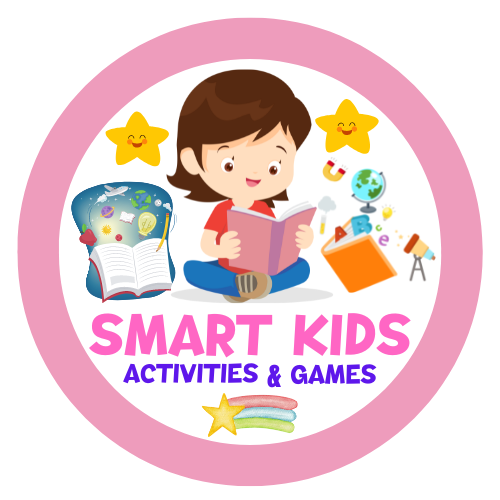Key Takeaways:
- Discover creative math instruction techniques that make learning fun
- Engage students in math lessons through interactive and hands-on activities
- Utilize visual aids and real-world examples to make math relatable
- Harness the power of technology and games to enhance math education
- Personalize instruction to meet individual students’ needs and preferences
Why Is Math Challenging for Some Students?
Not every student enjoys math, and there are various reasons for this. Some students may find math difficult, leading to feelings of frustration and disengagement. Others may simply be bored by repetitive or unrelated math exercises. Understanding these challenges can help teachers tailor their instruction to address students’ specific needs and create a more engaging learning environment. Research suggests that one reason some students struggle with math is a lack of foundational understanding. Math concepts build upon one another, so if a student doesn’t grasp a fundamental concept, they may struggle with subsequent topics. Inadequate support or instruction in earlier grades can contribute to this knowledge gap. Another factor that can make math challenging for students is a lack of confidence. Many students develop a negative mindset towards math due to past failures or a fear of making mistakes. This lack of confidence can hinder their motivation and willingness to actively engage in math activities. In addition, the abstract nature of math can be daunting for some students. The concepts and symbols used in math may feel disconnected from real-life applications, making it difficult for students to see the relevance and practicality of what they are learning. This lack of connection can lead to disengagement and a perception that math is irrelevant to their lives.The Power of Games in Math Education
Games provide an interactive and enjoyable way for students to learn and practice math concepts. By incorporating math games into their lessons, teachers can create a dynamic and engaging classroom environment. Whether it’s traditional board games or digital platforms, math games can motivate students, promote critical thinking, and reinforce math skills in a fun and memorable way. Gamification in math instruction has proven to be highly effective in capturing students’ interest and increasing their involvement in the learning process. By turning math problems into challenges and incorporating rewards and competition, games create a sense of excitement and achievement. This not only keeps students engaged but also helps them develop problem-solving skills and mathematical reasoning.Benefits of Incorporating Games in Math Instruction
- Enhances student engagement: Games make math learning enjoyable and interactive, motivating students to actively participate in the lessons.
- Promotes critical thinking: Games require students to apply their math knowledge in practical situations, fostering problem-solving skills.
- Reinforces math skills: Through repeated practice in a game format, students reinforce their understanding of math concepts and improve their accuracy.
- Fosters collaboration: Multiplayer games encourage teamwork and collaboration, allowing students to learn from and support each other.
- Boosts confidence: Success in math games boosts students’ confidence, making them more willing to take on challenges and explore new concepts.
| Math Game | Platform | Skills Addressed |
|---|---|---|
| Math Blaster | Online | Arithmetic, problem-solving |
| Sum Fun | Mobile App | Addition, subtraction, multiplication |
| Set | Physical Card Game | Pattern recognition, logic |
| Prodigy Math Game | Online | Number sense, algebra, geometry |
Using Visual Aids and Real-World Examples
Visual aids and real-world examples are powerful tools that can enhance math learning by making abstract concepts more tangible and relatable. By incorporating visual elements such as charts, diagrams, and manipulatives, teachers can help students visualize complex ideas and understand their applications in real-life scenarios. Real-world examples, on the other hand, bridge the gap between theoretical math concepts and practical usage, allowing students to see the relevance and utility of what they are learning. Visual aids provide a visual representation of mathematical concepts, making them easier to comprehend. Charts and diagrams can illustrate patterns, relationships, and sequences, helping students identify trends and make connections between different mathematical ideas. Manipulatives, such as cubes, counters, or geometric shapes, allow students to physically interact with math concepts, fostering a hands-on learning experience that promotes deeper understanding. Real-world examples bring math out of the classroom and into students’ everyday lives. By presenting math in familiar contexts, teachers can engage students’ interest and help them see the practical applications of mathematical concepts. Whether it’s calculating the area of a room, analyzing data from a scientific experiment, or understanding the concept of interest when managing personal finances, real-world examples help students grasp the relevance and usefulness of math in the real world.| Benefits of Using Visual Aids and Real-World Examples in Math Education: |
|---|
| Enhances understanding of abstract concepts |
| Promotes active engagement and participation |
| Makes math more relatable and applicable |
| Encourages critical thinking and problem-solving |
| Fosters a deeper connection between math and the real world |
Examples of Visual Aids and Real-World Applications:
- Using graphs to represent data and analyze trends in economics
- Using geometric shapes to explore patterns in architecture and design
- Using manipulatives to solve equations and understand algebraic concepts
- Using real-life scenarios to apply geometry principles in construction and engineering
“Visual aids and real-world examples bring math to life, making it more accessible and meaningful for students. By incorporating these strategies into math instruction, teachers can create an engaging learning environment that promotes deeper understanding and fosters a love for math.”
Utilizing Technology in Math Instruction
In today’s digital age, incorporating technology into math instruction can revolutionize the learning experience for students. By integrating math apps, websites, and interactive tools, teachers can engage students in a more dynamic and interactive way, making math lessons exciting and effective. Math-specific apps and websites offer a wide range of resources and activities that cater to different learning styles and abilities. These tools provide students with opportunities to practice math skills, solve problems, and receive instant feedback. Platforms like Khan Academy and Prodigy Math Game combine gamification with personalized learning, allowing students to progress at their own pace while enjoying the process. Interactive math tools, such as virtual manipulatives and simulations, provide students with hands-on experiences and visual representations of abstract math concepts. These tools help students develop a deeper understanding of mathematical principles and foster critical thinking skills. For example, using virtual manipulatives, students can explore geometric shapes, fractions, and algebraic expressions in a more interactive and engaging way.| Benefits of Technology in Math Instruction |
|---|
| Enhances student engagement and motivation |
| Provides personalized learning opportunities |
| Offers instant feedback and progress tracking |
| Facilitates hands-on learning experiences |
| Develops critical thinking and problem-solving skills |
The Power of Group Work and Collaboration
Collaboration and group work play a pivotal role in fostering a vibrant and engaging math classroom. When students work together, share ideas, and tackle math problems as a team, they develop not only a deeper understanding of mathematical concepts but also essential communication, critical thinking, and problem-solving skills. Collaborative math learning encourages students to actively participate, ask questions, and explore different strategies, creating a supportive and interactive environment where everyone’s contributions are valued.Benefits of Group Problem-Solving
Group problem-solving activities provide an opportunity for students to engage in meaningful discussions, share perspectives, and collectively find solutions. Through collaborative efforts, students can approach math problems from various angles, enhancing their problem-solving abilities and broadening their mathematical perspectives. Moreover, group work promotes teamwork, helping students develop important interpersonal skills such as effective communication, active listening, and collaboration. These skills are not only applicable in the math classroom but also in real-world scenarios where teamwork and cooperation are essential for success.Fostering a Supportive Learning Environment
Collaboration in math education goes beyond academic benefits. It creates a sense of community and support among students, fostering a positive learning environment. When students work together, they build relationships, learn from one another, and feel more comfortable expressing their thoughts and asking questions. This collaborative atmosphere nurtures students’ confidence and encourages them to take risks, knowing that their classmates are there to provide support and encouragement. By fostering a supportive learning environment through group work, teachers can help students develop a growth mindset, where they embrace challenges and persist in their mathematical journey.| Benefits of Collaborative Math Learning |
|---|
| • Enhances understanding of mathematical concepts |
| • Develops communication and critical thinking skills |
| • Promotes active engagement and participation |
| • Fosters a sense of community and support |
| • Encourages risk-taking and resilience |
Infusing Humor and Creativity into Math Lessons
Mathematics is often seen as a dry and challenging subject, but it doesn’t have to be that way. Infusing humor and creativity into math lessons can not only alleviate student boredom but also make the subject more enjoyable and engaging. By incorporating funny anecdotes, jokes, and creative activities, teachers can create a light-hearted and welcoming learning environment that sparks students’ interest and curiosity. One way to bring humor into math lessons is by using math-related jokes and puns. These can be incorporated into class discussions or used as icebreakers to capture students’ attention. For example, asking a question like, “Why did the math book look sad? Because it had too many problems!” can create a lighthearted atmosphere while also introducing a topic for discussion. Creativity is also key in making math fun. Teachers can present math problems in creative and relatable ways, such as using real-life scenarios or incorporating popular culture references. This not only makes the content more engaging but also helps students see the practical applications of math in their everyday lives. By framing math concepts in a fun and relatable way, teachers can stimulate students’ interest and make math more accessible to a wider range of learners.Benefits of Infusing Humor and Creativity
Infusing humor and creativity into math lessons has several benefits. Firstly, it helps create a positive and welcoming learning environment where students feel comfortable taking risks and making mistakes. This is crucial for developing a growth mindset and promoting a love for learning. Secondly, humor and creativity can enhance students’ understanding and retention of math concepts. When students are engaged and entertained, they are more likely to remember and apply what they have learned. In conclusion, infusing humor and creativity into math lessons is an effective way to make the subject more enjoyable and engaging for students. By incorporating jokes, funny anecdotes, and creative activities, teachers can create a positive and stimulating learning environment where students can develop a love for math. Through humor and creativity, math education can be transformed into an exciting and memorable experience for all.Individualizing Instruction for Differentiated Learning
Recognizing that every student is unique, teachers can tailor their instruction to accommodate individual learning needs and preferences. By incorporating differentiated learning strategies, such as offering various math pathways or providing additional support for struggling students, teachers can ensure that all students remain engaged and make progress in their math learning journey.Personalized Learning
Personalized learning is a key component of differentiated math instruction. By understanding each student’s strengths, weaknesses, and learning style, teachers can customize their approach to meet individual needs. This may involve adjusting the pace of instruction, providing alternative resources, or offering specialized support. Personalized learning not only enhances student engagement but also promotes a sense of ownership and responsibility for their own learning.Meeting Individual Needs in Math Education
In a diverse classroom, students may have varying levels of math proficiency, interests, and motivations. Differentiated instruction aims to address these differences by tailoring math activities and assignments to meet individual needs. This can include providing extension tasks for advanced learners, offering additional practice for struggling students, or presenting concepts through multiple modalities to cater to different learning preferences.| Benefits of Differentiated Math Instruction | Strategies for Implementation |
|---|---|
|
|
“Differentiated math instruction allows teachers to meet the unique needs of each student, fostering a supportive and inclusive learning environment. By tailoring instruction to individual students, teachers can empower them to develop their math skills, build confidence, and achieve success.”By adopting differentiated math instruction, teachers can create an inclusive classroom where every student feels valued and supported. This approach recognizes the diverse abilities and learning styles of students, allowing them to thrive and reach their full potential in math. With personalized learning and a focus on meeting individual needs, teachers can ensure that all students engage meaningfully with math and develop a strong foundation for future learning.
Building a Growth Mindset in Math
Developing a growth mindset is essential for fostering a positive attitude towards math and building math resilience. By instilling the belief that intelligence and abilities can be developed through effort and practice, teachers can empower students to embrace challenges and persevere in their math learning journey. Here are some strategies to help cultivate a growth mindset in math:- Encourage a “yet” mentality: Teach students to replace “I can’t do it” with “I can’t do it yet.” Emphasize that mistakes and setbacks are opportunities for learning and growth.
- Provide meaningful praise: Instead of solely praising intelligence or talent, recognize and acknowledge students’ effort, perseverance, and problem-solving strategies. This helps them understand that success in math is not solely determined by innate ability.
- Teach self-reflection: Encourage students to reflect on their learning process, including the strategies they used, the mistakes they made, and how they can improve. This helps develop metacognitive skills and promotes self-awareness.
- Set realistic goals: Help students set achievable goals that challenge them but are within their reach. Break down larger goals into smaller, manageable steps to build confidence and momentum.
Fostering a Positive Attitude Towards Math
In addition to building a growth mindset, fostering a positive attitude towards math is crucial for student engagement and success. Here are some strategies to promote a positive math learning environment:- Make math relatable: Connect math concepts to real-life situations to help students see the practical applications and relevance of math in their daily lives. This can increase motivation and engagement.
- Provide hands-on activities: Incorporate hands-on activities and manipulatives that allow students to explore math concepts in a tangible way. This helps make math more concrete and enjoyable.
- Use engaging and interactive resources: Utilize interactive online tools, educational games, and multimedia resources to make math learning fun and interactive. This can spark students’ curiosity and make math more enjoyable.
- Create a supportive learning environment: Foster a classroom culture that celebrates effort, encourages risk-taking, and values collaboration. This creates a safe space where students feel comfortable asking questions and making mistakes.
| Benefits of Fostering a Growth Mindset and Positive Attitude in Math |
|---|
| 1. Increased resilience: Students with a growth mindset are more likely to persevere through challenges and setbacks, leading to improved math resilience. |
| 2. Improved motivation and engagement: A positive attitude towards math and a belief in one’s ability to grow leads to increased motivation and engagement in math learning. |
| 3. Higher achievement: Students who develop a growth mindset and positive attitude are more likely to achieve higher levels of math proficiency and success. |
| 4. Enhanced problem-solving skills: By embracing challenges and adopting a positive attitude, students develop stronger problem-solving skills that can be applied not only in math but in various areas of life. |
Promoting Real-World Application of Math Skills
Mathematics is not just an abstract concept but a practical skill that can be applied to real-life situations. By demonstrating the relevance and practicality of math skills, teachers can enhance students’ engagement and understanding of the subject. Here are some strategies to promote the real-world application of math in the classroom:Connecting Math Concepts to Everyday Situations
One effective way to make math more relatable is by connecting it to everyday situations. Teachers can incorporate examples from daily life such as budgeting, measurement, or problem-solving scenarios. By showing students how math is used in real-world contexts, they can develop a deeper understanding of how math impacts their lives and why it is relevant.Hands-On Experiences and Simulations
Providing hands-on experiences and simulations can help students see the practical applications of math. For example, students can engage in activities like building models, conducting experiments, or solving real-life math problems. These experiences allow students to actively apply their math skills and see firsthand how math concepts translate into tangible outcomes.Guest Speakers and Field Trips
Bringing in guest speakers or organizing field trips can expose students to professionals who use math in their careers. This provides students with real-life examples of how math is applied in various fields such as engineering, finance, or architecture. Guest speakers can share their experiences and demonstrate how math plays a crucial role in their everyday work, inspiring students to see the relevance of math beyond the classroom.| Benefits of Promoting Real-World Application of Math Skills |
|---|
| Enhanced Engagement: By demonstrating the relevance of math, students are more likely to be engaged and motivated to learn. |
| Deeper Understanding: Connecting math to real-life situations helps students develop a deeper understanding of mathematical concepts. |
| Improved Problem-Solving Skills: Applying math skills to real-world scenarios can improve students’ problem-solving abilities, as they learn to think critically and apply mathematical principles in practical situations. |
| Long-Term Retention: When students see the practical applications of math, they are more likely to retain the knowledge and apply it in future situations. |
Providing Meaningful Feedback and Support
Regular feedback and support are essential for students’ growth and progress in math. Teachers play a crucial role in providing personalized math support and fostering effective teacher-student communication, creating a supportive learning environment. Through meaningful feedback, teachers can acknowledge students’ efforts, identify areas for improvement, and guide their mathematical development.Importance of Feedback
Feedback in math education serves as a powerful tool for student learning. It helps students understand their strengths and weaknesses, enabling them to make informed adjustments in their approach to problem-solving and conceptual understanding. By providing constructive feedback, teachers can guide students’ mathematical thinking and help them develop a deeper understanding of mathematical concepts. Feedback should be specific, clear, and actionable, highlighting areas where students excel and areas that require improvement. This targeted feedback ensures that students can make progress and build their mathematical skills with greater confidence.Personalized Math Support
Every student has unique learning needs and may require personalized math support. Teachers can provide one-on-one assistance, additional resources, or alternative instructional strategies to meet these individual needs. Personalized math support can include extra practice exercises, scaffolding techniques, or differentiated instruction to ensure that each student receives the necessary guidance and support to succeed in math.Effective Teacher-Student Communication
Building strong teacher-student communication is essential for student engagement and academic success. Teachers can create a supportive and open classroom environment by fostering positive relationships with their students. By actively listening, providing encouragement, and addressing students’ concerns, teachers can establish trust and create a safe space for students to ask questions, seek help, and share their mathematical ideas. Furthermore, effective teacher-student communication enables teachers to understand their students’ learning styles, preferences, and challenges. This knowledge allows teachers to tailor their instruction and provide the necessary guidance and support to help students overcome obstacles and reach their full mathematical potential.| Benefits of Feedback and Support in Math Education |
|---|
| 1. Enhances student learning and understanding of mathematical concepts |
| 2. Promotes student engagement and motivation in math |
| 3. Helps identify areas for improvement and guides students’ mathematical growth |
| 4. Fosters a positive and supportive learning environment |
| 5. Enables teachers to address individual learning needs effectively |
Conclusion
In conclusion, teaching math in an interesting and engaging way is essential for student success and enjoyment. By incorporating various strategies and approaches, teachers can create a dynamic and enjoyable math learning environment. Firstly, the use of games, visual aids, and technology can make math lessons interactive and entertaining. Games provide opportunities for students to practice math skills in a fun and engaging manner, while visual aids help students visualize abstract concepts and relate them to real-world examples. Technology, such as math-specific apps and websites, can further enhance student engagement and provide personalized learning experiences. Additionally, group work and collaboration promote a sense of community and interactive learning. By assigning group projects or problem-solving activities, teachers encourage students to work together, share ideas, and develop critical thinking skills. Furthermore, infusing humor and creativity into math lessons can alleviate student boredom and make the subject more accessible and enjoyable to a wider range of learners. Lastly, fostering a growth mindset, emphasizing real-world applications, and providing meaningful feedback and support are crucial in promoting student engagement and developing a love for math. Encouraging a positive attitude towards math, demonstrating its relevance in everyday life, and providing timely feedback can help students overcome challenges and build confidence in their math abilities.FAQ
How can I make math lessons more interesting for my students?
Incorporate fun and innovative techniques such as games, visual aids, technology, group work, and creative activities.
Why do some students struggle with math?
Students may find math difficult or boring due to various factors including a lack of understanding, repetitive exercises, or a disconnect between math and real-life applications.
How can I incorporate games in math instruction?
Use math-specific board games, online platforms, or digital games that combine learning and entertainment to engage students and reinforce math skills in an interactive way.
How can visual aids and real-world examples enhance math learning?
Visual aids like charts, diagrams, and manipulatives help students visualize abstract math concepts, while real-world examples make math relatable and applicable to everyday life.
What role does technology play in math education?
Technology offers opportunities for hands-on learning and engagement through math-specific apps, websites, and interactive tools that cater to students’ digital literacy skills.
How can group work and collaboration benefit math learning?
Assign group projects or problem-solving activities to encourage teamwork, communication, critical thinking, and problem-solving skills in a social and interactive math learning environment.
How can I make math more fun and engaging?
Inject humor and creativity into math lessons by using jokes, funny videos, and creative activities, making math more enjoyable and accessible to students.
How can I accommodate different learning needs in math instruction?
Incorporate differentiated learning strategies, offer various math pathways, and provide additional support for struggling students to ensure all students remain engaged and make progress.
How can I foster a growth mindset in math?
Emphasize the importance of effort, perseverance, and embracing mistakes as learning opportunities to build confidence and resilience in students’ math learning journey.
How can I show the practical relevance of math skills?
Connect math concepts to everyday situations like budgeting, measurement, and problem-solving scenarios to demonstrate the real-world application and importance of math in students’ lives.
How can I provide meaningful feedback and support in math education?
Offer timely and constructive feedback, acknowledge students’ efforts, and maintain open communication with students and parents to create a supportive network that encourages student engagement and addresses any challenges or concerns.
Download free activities and teaching resources Click Here
You may also be interested in
Exploring Modern Teacher Aids: Enhancing Classroom Success
Effective Tips on How to Promote Literacy in Early Childhood
Empowering Future Learners with Early Childhood Education
Effective Classroom Teaching Strategies for Optimal Learning
Boosting Kids Engagement in Classroom Activities: Tips and Techniques
Source Links
- https://www.wgu.edu/heyteach/article/3-ways-to-make-teaching-math-fun-and-easy1711.html
- https://www.prodigygame.com/main-en/blog/make-math-fun/
- https://www.oxfordlearning.com/5-ways-to-make-math-fun/






